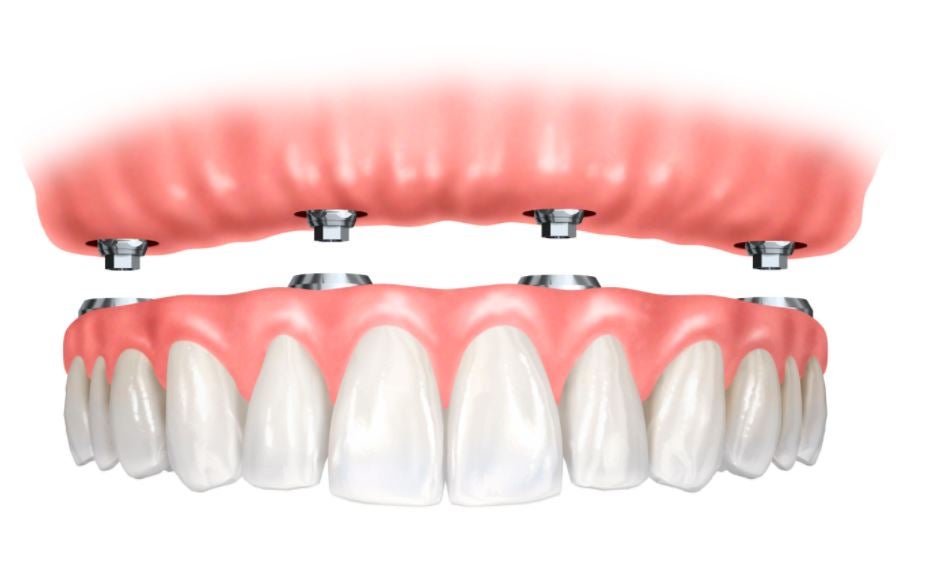Unknown Facts About Dental Sense
Unknown Facts About Dental Sense
Blog Article
Dental Sense Fundamentals Explained
Table of ContentsDental Sense - QuestionsThe smart Trick of Dental Sense That Nobody is DiscussingSome Known Facts About Dental Sense.Dental Sense Can Be Fun For Everyone
are medical devices operatively dental implanted right into the jaw to recover an individual's capacity to eat or their appearance. They supply support for artificial (fake) teeth, such as crowns, bridges, or dentures. When a tooth is lost because of injury or illness, an individual can experience problems such as quick bone loss, defective speech, or adjustments to eating patterns that cause pain.Oral dental implant systems consist of a dental implant body and oral implant joint and may also include a joint addiction screw. Professional teeth whitening. The dental implant body is operatively placed in the jawbone in location of the tooth's root. The oral implant joint is generally attached to the dental implant body by the abutment fixation screw and expands with gum tissues right into the mouth to sustain the connected fabricated teeth
(https://dental-sense.jimdosite.com/)Framework of The Dental Implant System picking oral implants, talk to your dental copyright about the prospective advantages and risks, and whether you are a candidate for the treatment. Points to take into consideration: Your general health is an essential consider determining whether you are a good candidate for dental implants, just how long it will take to recover, and for how long the dental implant may remain in location.
Smoking may affect the healing process and decrease the long-term success of the dental implant. The healing process for the implant body might take several months or longer, during which time you normally have a short-lived joint in area of the tooth. the oral implant treatment: Thoroughly follow the dental health instructions provided to you by your oral company.
Not known Details About Dental Sense
Implant failure can lead to the requirement for one more surgery to repair or change the dental implant system. Recovers the ability to chew Brings back cosmetic appearance Aids keep the jawbone from reducing as a result of bone loss Maintains the wellness of the surrounding bone and periodontals Assists maintain adjacent (nearby) teeth steady Improves high quality of life Damage to bordering all-natural teeth throughout implant placement Injury to the surrounding cells throughout surgical treatment, such as sinus perforation Injury throughout surgery (for instance, fracture of surrounding jawbone) Insufficient feature, such as feeling like the teeth do not attack together generally A sensation that the tooth hangs or twisting in position arising from an abutment screw loosening up Implant body failure (looseness of the implant body) because of systemic infection, which might be most likely in people with uncontrolled diabetes mellitus because of neighborhood infection in bone and gums sustaining the implant body because of delayed recovery, which may be most likely in clients that smoke Difficulty cleaning up the gum tissues around the implant, causing inadequate oral health Without treatment periodontal illness Post-surgical numbness because of nerve impingement or damages Always inform healthcare service providers and imaging service technicians that you have dental implants prior to any kind of magnetic resonance imaging (MRI) or x-ray procedures.
FDA is not knowledgeable about any damaging occasions reported for MRI or x-ray procedures with dental implants. Dental implants systems are generally made from products that comply with global agreement standards of the International Organization for Standardization (ISO) or ASTM International. These criteria have details of what makes a risk-free product.

A dental implant is a structure that changes a missing out on tooth. With screw-like devices, the surgeon inserts an implant right into the jawbone, and it serves as a support for an artificial tooth, called a crown. A tool called an abutment connects the fabricated tooth Recommended Reading to the oral implant. The crown is custom-made to fit the person's mouth and match the color of their teeth.
Indicators on Dental Sense You Should Know
Some people are not eligible for dental implant surgical treatment. It is for oral cosmetic surgeons to run on people with: severe illnessuncontrollable metabolic diseasebone or soft tissue illness or infectionIf these problems are fixed, a person can have the surgical treatment. In, oral surgeons avoid operating on individuals with: If people with any of the above undertake oral implant surgical treatment, there is a higher threat of the implant stopping working.

Dental dental implant surgical treatment is an individualized procedure. Provide you time to heal. Attach the blog post and last crown, bridge or denture.
Next, your surgeon will meticulously put the oral implant right into your jaw. Your specialist will certainly reposition your gum tissues and close the incision with stitches. If your implant is near the front of your mouth, your dental practitioner will make a temporary tooth for you to use until you heal. That means, you will not have a void in your smile while you recoup.
Not known Incorrect Statements About Dental Sense
Your copyright can inform you what to expect in your situation. During the healing phase, your jawbone ought to fuse to the dental implant. This process, called osseointegration, is crucial for stability and lasting success. This process can take anywhere from 3 to nine months. In many cases, it may take longer.
When your dental implant heals, your dentist can affix the joint (little adapter message) and your last restoration (crown, bridge or denture). This typically takes about one hour to complete and may require a second small surgical procedure. You should not feel any discomfort throughout your oral implant procedure since your supplier will certainly use medicine to numb your gum tissues.
Report this page